




Discover the valuable insights our consultants provide. Subscribe to our Insights blog to receive email alerts whenever we post something new!


Published on: Feb 19, 2025 4:12:22 PM by Evan Conroy
Updated on: June 13, 2025
Mergers and acquisitions (M&A) can propel businesses to new heights, but they also come with challenges—chief among them, cultural clashes. These conflicts often arise when two organizations with differing norms, values, and practices come together.
Identifying and addressing these clashes early through effective change management planning is critical to ensuring a smooth integration.
Description: A merger can bring together organizations with vastly different leadership approaches. For example, one company may operate with a hierarchical, top-down style, while the other embraces a collaborative and decentralized approach. These differences can result in confusion and frustration among employees who are accustomed to specific leadership norms.
Signs to Watch For: Differences in decision-making processes, delegation levels, and leadership accessibility. Employees may express dissatisfaction with new structures or resistance to change management efforts.
Identification Tip: During due diligence, review leadership structures and decision-making protocols. Conduct interviews with leaders to understand their management philosophies.
Solution: Facilitate leadership alignment workshops to create a unified management framework. Incorporate a change management plan that outlines strategies for aligning leadership styles and decision-making processes.
Description: Communication is central to every organization, but styles can vary significantly. A company that relies on formal email communication may struggle to integrate with one that prefers informal, real-time messaging. These differences can lead to misunderstandings and inefficiencies.
Signs to Watch For: Misaligned meeting etiquettes, differing feedback practices, or a lack of clarity in inter-departmental communication. Resistance to adopting new communication platforms is another indicator.
Identification Tip: Assess the communication tools and platforms each organization uses, such as Slack, Teams, or traditional email. Observe meeting dynamics during integration phases.
Solution: Develop a comprehensive communication strategy, ensuring that both organizations adopt best practices. Include communication updates as part of your change management strategies to ease the transition.
Description: Merging organizations can have differing perspectives on work-life balance. One company might prioritize flexible working arrangements, while the other emphasizes strict schedules and long hours.
Signs to Watch For: Disparities in remote work policies, PTO structures, and overtime expectations. Employees accustomed to flexibility may feel demotivated if their work-life balance shifts significantly.
Identification Tip: Compare HR policies and employee engagement surveys to understand expectations and satisfaction levels.
Solution: Harmonize workplace policies through change management planning. Introduce flexible options that balance productivity with employee well-being, such as hybrid work models.
Description: Disparate systems for evaluating and rewarding performance can create tension. One company may prioritize individual achievements, while the other focuses on team-based success.
Signs to Watch For: Misalignment in KPIs, discrepancies in bonus structures, and confusion about performance evaluations.
Identification Tip: Request detailed documentation of performance management systems from both organizations. Host discussions to identify overlapping or conflicting metrics.
Solution: Redesign performance evaluation frameworks as part of your change management plan. Focus on transparency and equity in metrics and incentives to foster trust.
Description: A company’s identity stems from its values and mission. When these clash, employees may feel disconnected or uncertain about the organization’s direction.
Signs to Watch For: Discrepancies in community engagement, diversity initiatives, and ethical standards. Employees may resist change if they perceive a misalignment with their values.
Identification Tip: Compare mission statements and conduct employee surveys to understand core value alignment.
Solution: Develop a unified mission statement. Incorporate value alignment workshops into your change management strategies to build a cohesive identity.
Include cultural assessments in your change management planning process. Evaluate leadership, communication, and workplace policies during due diligence.
Use surveys and focus groups to gather honest feedback from employees. This can help identify potential areas of resistance to change management efforts.
Speak with leaders from both organizations to understand their approaches to culture and integration.
Hire consultants to conduct unbiased cultural analyses and recommend strategies for smoother integration.
Solution: Facilitate alignment workshops for leadership teams. Develop a shared decision-making framework as part of your change management plans.
| EXAMPLE |
| Implement a mentorship program pairing leaders from both organizations to exchange strategies and foster understanding. |
Solution: Establish a unified communication strategy and provide training on new tools. Address employee resistance to change management by demonstrating the benefits of improved communication.
| EXAMPLE |
| Launch joint meetings to model effective communication practices and encourage collaboration. |
Solution: Create flexible policies that respect both traditional and modern approaches. Incorporate employee feedback into your change management strategies to ensure widespread acceptance.
| EXAMPLE |
| Introduce hybrid work schedules that offer flexibility while maintaining productivity. |
Solution: Redesign KPIs and incentives to reflect the goals of the merged organization. Focus on transparency to reduce resistance to change.
| EXAMPLE |
| Combine individual and team-based rewards to motivate employees and promote unity. |
Solution: Host value alignment workshops and create a rebranding campaign to emphasize shared values. Include these efforts in your change management plan.
| EXAMPLE |
| Launch a campaign highlighting shared initiatives, such as sustainability or innovation, to foster a sense of unity. |
Cultural clashes in mergers and acquisitions are inevitable but manageable. Proactively addressing these conflicts through a well-structured change management plan can help businesses reduce resistance to change and build a cohesive organization.
Remember, successful integration relies on identifying potential issues early, involving employees in the process, and prioritizing transparent communication.
If you’re navigating a merger or acquisition, consider partnering with experts to develop tailored change management strategies for a seamless cultural integration.
© 2025 SVA ConsultingShare this post:

Evan is the Practice Director of Business Applications at SVA Consulting, where he brings over a decade of experience in helping organizations grow and succeed. With a focus on operational excellence, strategic planning, and team leadership, Evan is dedicated to finding practical solutions that make a real difference for his clients.







contact@svaconsulting.com

(800) 366-9091

1221 John Q Hammons Dr., Suite 201, Madison, WI 53717

18650 W. Corporate Dr., Suite 205, Brookfield, WI 53045

1600 Utica Ave S, 9th Floor,
Saint Louis Park, MN 55416

7135 E. Camelback Road, 230, Scottsdale, AZ 85251

109 West Commercial Street, Suite 107, Sanford, FL 32771
©2025 SVA Consulting, LLC. All Rights Reserved. | Privacy Policy | Cookie Policy | CCPA
